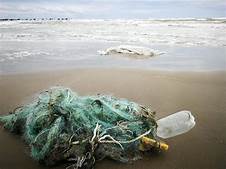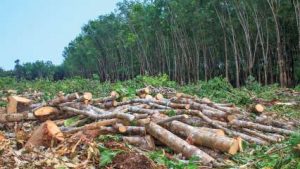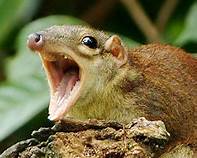Today Current Affairs:4th July 2022 for UPSC IAS exams, State PSC exams, SSC CGL, State SSC, RRB, Railways, Banking Exam & IBPS, etc
Table of Contents
2022 UN Ocean Conference:

The 2022 UN Ocean Conference, co-hosted by the Governments of Kenya and Portugal, took place on 27 June – 1 July 2022, in Lisbon, Portugal.
- The overall theme of the Conference was: “Scaling up ocean action based on science and innovation for the implementation of Goal 14: stocktaking, partnerships and solutions.”
- The UN Ocean Conference concluded, with governments and heads of state agreeing on a new political declaration to Save Our Ocean.
- Recognizing a “collective failure to achieve Ocean related targets” so far, leaders renewed their commitment to take urgent action and to cooperate at all levels, to fully achieve targets.
- The signatories emphasized the particular importance of implementing the Paris Agreement of 2015, and last November’s Glasgow Climate Pact to help ensure the health, productivity, sustainable use, and resilience of the ocean.
- India committed to a Coastal Clean Seas Campaign and will work toward a ban on single use plastics.
- The United Nations Decade of Ocean Science for Sustainable Development (2021-2030) aims to achieve the science we need, for the ocean we want.
Windfall Tax:

Government slapped a windfall tax on domestic crude oil producers, imposed export duties on petrol, diesel and aviation turbine fuel (ATF), and hiked the import duty on gold in efforts to reduce pressure on the rupee, rein in the current account deficit (CAD), and increase the domestic supply of petroleum products.
- A windfall tax is a higher tax rate on sudden big profits levied on a particular company or industry.
- Domestic producers sell crude oil to domestic refineries at international parity prices, thus making windfall gains.
- ONGC reported bumper profits in the March quarter (when international prices soared to a near 14-year high of $139 per barrel).
Forest (Conservation) Rules, 2022:

MoEFCC has notified Forest (conservation) Rules 2022, under the Forest (conservation) Act, 1980.
New Rules:
- Constitute an advisory committee, a regional empowered committee and a screening committee at the State/UT
- It will examine all the linear projects (e.g. roads, highways, etc) involving land up to 40 hectares and the use of forest land up to 0.7 canopy density
- A fixed time for quicker review of each project
- States are given the responsibility of settling forest rights of forest dwellers (Forest Rights Act, 2006) and allowing diversion of forest land.
- If the state already has over two-thirds area under green cover or over one-third area under forest cover, then CA could be taken in other states/UTs where the cover is less than 20%
Autonomous Flying Wing Technology:

Defence Research and Development Organisation(DRDO) carried out the maiden test flight of a new unmanned Aerial Vehicle, an Autonomous Flying Wing Technology Demonstrator.
- DRDO is in the process of developing Unmanned Aerial Vehicles (UAVs) of different classes to meet the requirements of the armed forces.
- Autonomous Flying Wing Technology Is an Unmanned Combat Aerial Vehicle (UCAV) or a combat drone that is a flying wing type.
- It refers to a tailless fixed-wing aircraft that houses its payload and fuel in its main wings and does not have a defined fuselage-like structure found in conventional aircraft.
- The design has the potential to deliver high fuel efficiency and stability if executed with precision.
- Applications:
- Mapping of Landslide Affected Area
- Infested Crop Damage Assessment
- Large Scale Mapping
- Traffic Monitoring and Management
- Logistics support
Treeshrew Spotted In Jammu and Kashmir:

Scientists have spotted fossils of a small mammal resembling squirrels called treeshrew (known as Sivatupaia ramnagarensis) belonging to a new genus and species from Jammu and Kashmir.
- This treeshrew currently represents the oldest record of fossil tupaiids in the Siwaliks, extending their time range by 2.5-4.0 Million Years in the region.
- Tupaiids refers to several species of East Indian and Asiatic insectivores of the family Tupaiidæ, somewhat resembling squirrels in size and arboreal habits. The nose is long and pointed.
- Treeshrews are very rare elements of the fossil record, with only a few species known throughout the entire Cenozoic era.
- Cenozoic Era means 66 million years ago until today or ‘recent life’.
- During this era, plants and animals look most like those on Earth today.
- Periods of the Cenozoic Era are split into even smaller parts known as Epochs.
- Dietary analyses suggest that the new tupaiid was probably adapted for a less mechanically challenging or more fruit eating diet compared to other extant and fossil tupaiids.
- A dietary analysis is a nutritional assessment that allows technicians to analyse the patterns, quantity, and nutritional quality of food consumed by an individual.
- The identification of time sensitive dental features and species in the current collection helps to provide a more precise age estimate for this Ramnagar locality as between 12.7-11.6 Million Years.
Financial Services Institution Bureau:

The Cabinet Appointments Committee (ACC) has passed a government resolution to establish the Financial Services Institutions Bureau (FSIB) in place of the Banks Board Bureau (BBB).
- The new framework was proposed by the Department of Financial Service, Ministry of Finance.
- The Financial Services Institutions Bureau will select the chiefs of public sector banks and insurance companies.
- The FSIB will have the clear mandate to issue guidelines and select general managers and directors of state-run non-life insurers, general insurers and Financial Institutions.
- FSIB will be the single entity for making recommendations for appointments of WTD (Whole-time Director) and NEC (Non-executive Chairman) in Public Sector Banks, India Private Limited company and Financial Institutions.
- The Department of Financial Services shall first carry out necessary modifications in the Nationalised Banks (Management and Miscellaneous Provisions) Scheme of 1970/1980 (as amended).
- Chairman of FSIB: The ACC has approved the appointment of Bhanu Pratap Sharma as Initial chairperson of FSIB for two years.
- He was the former Chairman of BBB.
- The government, in 2016, approved the constitution of the BBB to make recommendations for appointment of whole-time directors as well as non-executive chairpersons of Public Sector Banks (PSBs) and state-owned financial institutions.
- It was an autonomous recommendation body.
- The Banks Board Bureau was a public authority as defined in the Right to Information Act, 2005.
- The Ministry of Finance has the final decision-making authority on the appointments in consultation with the Prime Minister’s Office.
- Apart from recommending personnel for the PSBs, the Bureau had also been assigned with the task of recommending personnel for appointment as directors in government-owned insurance companies.
PSLV Orbital Experimental Module (POEM):

Besides placing three Singaporean satellites in precise orbit, the Indian Space Research Organisation (ISRO) also achieved the feat of successfully launching the PSLV Orbital Experimental Module or ‘POEM’.
- The PSLV Orbital Experimental Module is a platform that will help perform in-orbit experiments using the final, and otherwise discarded, stage of ISRO’s workhorse rocket, the Polar Satellite Launch Vehicle (PSLV).
- The PSLV is a four-stage rocket where the first three spent stages fall back into the ocean, and the final stage (PS4) — after launching the satellite into orbit — ends up as space junk.
- However, in PSLV-C53 mission, the spent final stage will be utilised as a “stabilised platform” to perform experiments.
POEM is carrying six payloads, including two from Indian space start-ups Digantara and Dhruva Space. - According to ISRO, POEM has a dedicated Navigation Guidance and Control (NGC) system for attitude stabilisation, which stands for controlling the orientation of any aerospace vehicle within permitted limits.
- The NGC will act as the platform’s brain to stabilize it with specified accuracy.
- POEM will derive its power from solar panels mounted around the PS4 tank, and a Li-Ion battery. It will navigate using “four sun sensors, a magnetometer, gyros & NavIC.
India’s Largest Floating Solar Power Project:

India’s largest floating Solar Power Project is now fully operational.
- NTPC declared Commercial Operation of the final part capacity of 20 MW out of 100 MW Ramagundam Floating Solar PV Project at Ramagundam, Telangana with effect from July 01, 2022.
- With the operationalisation of 100-MW Solar PV Project at Ramagundam, total commercial operation of Floating Solar Capacity in Southern Region rose to 217 MW.
- Earlier, NTPC declared Commercial operation of 92 MW Floating Solar at Kayamkulam (Kerala) and 25 MW Floating Solar at Simhadri (Andhra Pradesh).
- The solar modules are placed on floaters manufactured with HDPE (High Density Polyethylene) material.
International Sports Journalists Day:

World Sports Journalists Day which is also known as International Sports Journalists Day is celebrated every year on 2nd of July.
- World Sports Journalist Day was first observed in 1994 when the International Sports Press Association decided to commemorate it in honours of its 70th Anniversary.
- The day is observed to honour all sports journalists around the world and also brings awareness about the sports journalism to the common people.
- Sports journalism developed during the 19th century, but was centered on elitist sports and was more focused on reporting the social context of sports events.
- In the 1920s, the profession began to take shape as newspapers dedicated more time and space to sports journalism.
- The 20th century witnessed a massive boom in the popularity of sports journalism.
- In 1880, only 0.4 percent of space was dedicated to sports in newspapers. This figure rose to 20 percent by the 1920s, as newspapers began hiring reporters exclusively for sports coverage.




